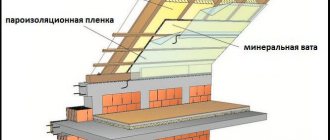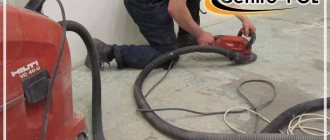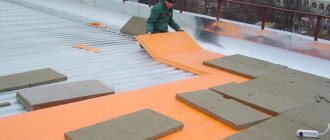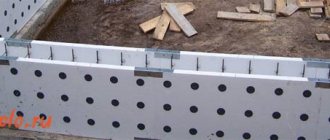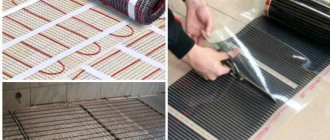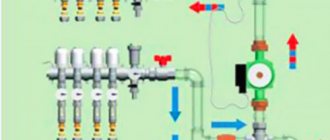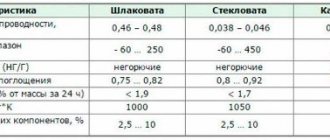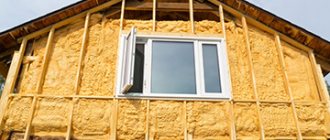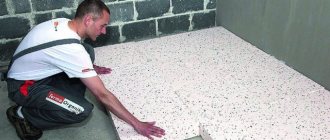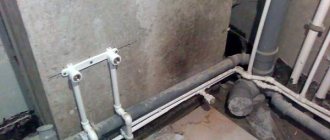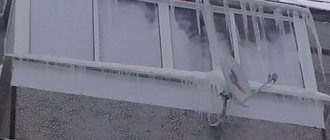The insulation of a wooden floor in a wooden house is carried out using a technology specially developed for this purpose. The coldest surface of the house, of course, is the floor. This usually applies to the first, least protected floor of the building, as well as separate wooden houses. Why is the floor in a lower floor apartment always cold? This is due to the fact that air rushes down. There are also drafts from under the floor below. To minimize heat loss, the floor in the house has to be insulated.
This procedure is especially necessary in houses with classic eco-friendly wooden flooring. Even if you lay wood elements (boards) tightly together, they will dry out over time. It will certainly begin to leak from the crevices. This will naturally lead to heat loss.
The insulation of a wooden floor in a wooden house is carried out using a technology specially developed for this. It is quite easy to learn. Various types of insulation will be appropriate here. The right choice depends on preferences, financial capabilities and certain technical parameters.
The first steps towards insulation
Before proceeding directly to insulating the floor in a wooden house, it is extremely necessary to determine the (maximum permissible) optimal height of the thermal insulation layer, understand the operating conditions of the floor (room humidity and temperature, future load on the floor), floor design, etc. Making the right choice will be much easier once you address these issues.
Thermal insulation consists of layers laid in stages: a heat insulator layer – a vapor barrier layer – a floor covering.
Also read materials:
The following sequence of work awaits you.
- Installation of wooden logs (it is important to do this correctly).
- Fastening boards and wooden panels (on joists). This coating will serve as the necessary auxiliary base. Insulation will need to be laid on it.
- Between the joists - laying insulation. Place the material tightly. Use either sealant or high-quality polyurethane foam to fill the gaps formed between the existing joists and the sheets being laid.
- Place vapor barrier material on the insulation. Secure the vapor barrier to the joists. In this case, it is better to seal the gaps and joints with metallized tape.
- Laying wooden floor cladding with finishing is the final stage.
Thermal insulation consists of layers covered in stages: heat insulator layer – vapor barrier layer – floor covering
Before designing a layer of thermal insulation, decide on the thickness of the selected material. The latter will depend on climatic conditions and the type of insulation.
For each case, thermal insulation is selected individually.
Important points of thermal insulation
- When purchasing insulation material, you need to check its quality. Don't be shy about asking for a certificate for verification. High-quality materials restore their shape after mechanical stress.
- The main criterion for choosing thermal insulation material for residential premises should be health safety, not cost. Remodeling a floor is a labor-intensive and time-consuming process.
- Waterproofing of insulation must be organized on both sides (internal and external).
- It is worth providing a compensation gap between the insulation and the finished floor.
- A metal mesh can be placed on the rough flooring to protect the floor from rodents.
- Between the rough and finished floors, you can organize a heating system using a special heating cable.
- The floor of a wooden house should be well ventilated.
- To increase thermal insulation, the foundation and basement are insulated.
We recommend: Laying tiles on the floor with your own hands
A reliably furnished floor in a wooden house is a criterion for heat preservation. It is not difficult to insulate it yourself, the main thing is to choose the right material. The most popular method is the double floor system.
How to insulate a floor in a wooden house: choosing a material
The quality of thermal insulation of the flooring directly depends on the correct choice of material. Today, the Russian construction market has a wide selection of thermal insulators.
Penoplex, stone and mineral wool, polystyrene foam and the commonly used fiberglass are popular types of thermal insulation. Each of them has its pros and cons. Which one is better?
- Fiberglass, stone and mineral wool - these materials have good thermal protection properties and excellent noise absorption. If you want to lay insulation in one layer, then use rolls or mats. The latter are considered a more elastic and durable material. PolaRemont.ru advises installing insulation elements between joists or under rough flooring. Both options are acceptable.
- Penoplex and expanded polystyrene can also be used. At the same time, they will delight you with an affordable price, high thermal insulation of the structure and durability. Thermal insulation from these materials is carried out by spraying. This is an effective, fairly fast and economical method. This method is most often used in new homes.
Advantage of expanded polystyrene:
- minimal water absorption, and, accordingly, resistance to water;
- excellent thermal insulation qualities;
- shape stability;
- high strength material;
- volume stability;
- long service life;
- stability of biological type;
- immunity to various microorganisms;
- the material is environmentally friendly.
Advantages of mineral wool:
- the material is low in density;
- the level of thermal conductivity is insignificant;
- long service life;
- reasonable price;
- non-flammability;
- environmentally friendly material;
- high level of water repellency;
- high chemical resistance.
Mineral wool is recommended by many experts as the best insulation for floors in a wooden house
All of the above materials meet environmental requirements:
- The higher quality the polystyrene foam, the more environmentally friendly it is. It must be dried well so that no volatile compounds remain in the material. Otherwise, at elevated temperatures they can poison a person. Styrene can cause toxic hepatitis, rarely curable leukemia, etc.
- You can fit into the tight confines of ecology by using fiberglass or mineral wool, provided that these materials use non-harmful resins. Phenol-formaldehyde resins, which are undesirable, can be identified by the brown or yellow tint of the material.
Thermal insulation of a wooden floor on joists with an underfloor
Buildings and structures designed for constant use in winter require more thorough floor insulation. At the same time, quite often used for thermal insulation purposes:
- mineral wool,
- insulation from waste wood,
- ecowool,
should be reliably protected from moisture. It cannot be placed directly on the ground surface, even using polymer roll waterproofing. In addition to capillary suction of water from below due to temperature differences, condensation can accumulate in it. Drops of moisture, retained in microchannels or pores of the heat-protective layer, significantly reduce its effectiveness.
Therefore, at high groundwater levels, it is recommended to raise the frame structure, including floor insulation on joists, above the ground surface by installing a ventilated subfloor. The supports of the frame can be any sufficiently strong pillars with a height of at least 30-50 cm made of non-rotting materials, as well as wood impregnated with antiseptics and hydrophobes.
To reduce humidity in the underground space, it is advisable to cover the soil surface with plastic film. The panels are laid in an overlap of 10-15 cm, sealed with wide tape at the seams. If the supports are monolithic blocks of porous concrete, it is recommended that they be installed directly on the film. Gaskets under the logs made of 2-3 layers of bitumen-impregnated roofing material are placed on the heads of all types of pillars.
In addition to ground waterproofing, it is necessary to install a barrier of breathable waterproofing (membrane) at the bottom of the wooden floor insulation frame. Vapor-permeable material is laid in such a way as not to prevent moisture from escaping from bulk or fibrous thermal insulation. The underground space receives 2 layers of protection at various levels, not only from moisture, but also the migration of soil radon gas into the living space is reduced.
Important! The ventilated subfloor space must have a sufficient number of vents (vents) with adjustable gaps. The holes are covered with a fine metal mesh or grate, which makes it difficult for rodents to penetrate into the underground.
If you plan to use sealed insulation for a wooden floor - medium or high density polystyrene boards, foil thermal insulation based on foamed polymers (isolon, penofol), then there is no need for a breathable membrane barrier.
Do-it-yourself floor insulation using joists: sequence of processes
Making the base:
- for the base for the supports, you need to choose soil 30-50 cm deep, and the width dimensions are 10-15 cm larger than the column. Fill the pit with sand and gravel mixture and compact it;
- Place supports on the formed pillows. Their step is taken to be no more than 2 m along the span (along the log);
- the heads of the pillars should be leveled in a horizontal plane using patches of cement-sand mortar. If the thickness of the mortar exceeds 3 cm, then it is better to reinforce it with a metal mesh, for example a masonry mesh;
- Lay waterproofing sheets (2-5 cm wider than the posts) on top of the hardened blotches, onto which you already mount the logs. The pitch between the lags depends on the rigidity of the entire structure: the material used for floor insulation, the thickness of the lag, the type of finishing coating, as well as operational loads. For typical floor structures in residential buildings, logs with a cross section of 100-150*50 mm are usually used. Moreover, it is advisable to install them in increments of 600 mm, which corresponds to the width of the mineral wool slabs. With this placement, floor insulation with mineral wool is noticeably simplified, and the amount of its trim is reduced.
Thermal insulation and flooring:
- If you decide to use slab or roll thermal insulation materials, then to lay them it is enough to secure a metal mesh along the bottom plane of the logs. If you choose a loose heat insulator, you will have to assemble a lower subfloor to support it. OSB boards, substandard boards, plywood scraps, etc. are suitable for it. The rough flooring is mounted directly to the bottom plane of the joists or to their side surface through the skull block;
- floor insulation on joists must be reliably protected from above from exposure to both dripping liquid and moist air. Therefore, lay a water vapor barrier film on top of it. For each subsequent strip, ensure an overlap of at least 10-15 cm over the previous one. Glue the seams with tape intended for such work;
- Now, in principle, you can begin to assemble flooring boards, nailing them or screwing them to the joists with self-tapping screws. However, to preserve the wood, it is better to provide a ventilation gap of at least 30 mm under the top flooring. The boards of the appropriate thickness will be used to lift the covering boards above the joists.
Durability of thermal insulation
Various qualities must be taken into account when choosing a particular material. For example, if there is some load on the heat-protective layer, it will no longer be able to restore its original volume - some of the fibers will simply break. That is why such raw materials do not adhere tightly to the joists and floor beams. As a result, cold bridges are inevitably created on structures. Condensation can also appear where the insulation does not fit tightly.
In order not to make a bad choice and buy good quality insulation, press on a small piece of it (for example, step on it). If after such a test it returns to its former shape, then it is suitable for you. If it remains crumpled and flat, then it is best to refuse such a product.
Today it has become quite difficult to determine how long thermal insulation will last.
Is it possible to improve thermal insulation qualities? When insulating, you can’t get by with mats alone. Insulated finishing options are often used: heat-insulating linoleum, two-layer carpeting. For example, PolaRemont.ru recommends laying wood-fiber boards or tiles under parquet. Other materials can also not be neglected. The first floor can be made warmer by insulating the foundation. Basements must be thoroughly checked and all cracks sealed.
The main stages of laying insulation
The best installation option is to lay the floor insulation along the joists. These cross boards are used for subsequent flooring.
Logs for laying floor insulation
Main stages of work:
- The logs are installed on the finished foundation. The recommended distance between the bars is no more than 1-1.2 m;
- after this, thick plywood or chipboard sheets are installed. They are secured with self-tapping screws. This is how the base is prepared for laying the heat-insulating layer;
- Insulation is laid between the wooden joists. Depending on the material used, the thickness of this layer may vary. In any case, it should not exceed the size of the logs themselves;
- Next, a layer of waterproofing is laid. Although this step is recommended by experts for maximum results, it can be skipped. This is due to the resistance of some materials to moisture;
- Now you can lay the flooring. It may be old. Or it can be replaced with a new one.
Compliance with the specified sequence will allow you to insulate a wooden floor with penoplex or other insulation.
Insulation is placed between the joists
Features of sawdust insulation
Insulating the floor with sawdust is an environmentally friendly and affordable way to keep the house warm. When choosing this insulation, you must adhere to a number of recommendations:
- Broken glass should be added to the prepared mixture of sawdust and cement or clay. This will prevent rodents from appearing. Do not forget about the use of special solutions;
- the mixture consists of five parts sawdust, one part cement (clay) and half water. This proportion must be observed. When mixing a steeper solution, you will get durable insulation, but with a low thermal conductivity coefficient;
- carefully fill the voids between the joists. This will allow you to get an even layer of insulation. If you do not maintain this technology, the thermal insulation will be “leaky” and the floor will remain cold.
When insulating the floor with sawdust, you can save a lot
Features of penoplex insulation
Due to its high strength and affordable cost, floor insulation with penoplex in a wooden house is more common than other materials.
Among the installation features of this insulation, we note the following points:
- penoplex is laid between the joists and attached to the floor from below with assembly glue;
- It is necessary to accurately and tightly fit the edges of the slabs. This will prevent cold air from entering;
- the joints are additionally glued for maximum adhesion;
Penoplex must be secured with mounting adhesive
laying a waterproofing layer is required
This is especially important for a private house or cottage in a swampy area; Before laying penoplex, wooden beams and crossbars are treated with a special solution. This will avoid rotting and the appearance of bugs.
Due to its light weight, penoplex is excellent for insulating floors in a frame house. The load on the foundation of the building will be minimal. This will prevent the house from shrinking over time.
The main points of insulation with expanded clay
This insulation is installed according to the technology described above. However, there are a number of features that you need to know. To insulate the floor in a wooden house with expanded clay, you must:
- be sure to lay a cushion of sand. It is poured in an even layer and compacted thoroughly;
- A layer of liquid mastic is applied on top of this pillow. It plays the role of waterproofing;
It is necessary to put a metal mesh on the expanded clay for leveling
- Now expanded clay is poured. To ensure that the layer is as even as possible and without voids, it is recommended to use a material of different fractions. This will allow the granules to fit more tightly to each other;
- a vapor barrier is required. Only after this can the main floor covering be laid.
Due to the noticeable weight of this material, insulating a wooden floor with expanded clay is best done with a solid foundation.
We insulate a wooden floor along the joists
Most often, floor insulation in a wooden house is realized by using the insulation method using joists. It is quite simple to implement and at the same time very effective. In any case, you can eliminate significant heat loss. This method is especially relevant for the basement and first floors - there the floors are closest to the ground.
The technology goes like this:
- Install on a T-shaped joist base. Maintain a meter step.
- Then secure the boards or panels on which you will later lay the insulation. They must be secured to a special type of cranial bars or hemmed from below.
- Then lay the insulation on the flooring between the joists.
- Next, you will have to take care of vapor and waterproofing. True, the need for this procedure arises only in individual cases. It all depends on the type of insulation. So, this procedure will be relevant if you use ecowool or mineral wool. Lay the vapor barrier sheets overlapping by about fifteen centimeters. Its edges should “climb” onto the wall by about ten centimeters. For waterproofing, you can use either simple polyethylene film or special types of materials.
- The final stage is installation of the floor covering and finishing of the flooring.
Most often, floor insulation in a wooden house is realized by using the method of insulation along logs
Important! You can also insulate the floor using joists that are laid on even brick columns. Insulation boards must be laid between these columns (foam plastic, fiberglass, mineral wool). The insulation layer must be covered with a layer of vapor barrier on top.
An invariable advantage of thermal insulation of a wooden floor along joists is the ease of execution of the work. Moreover, the method is very effective. The insulation does not experience mechanical load, therefore, any thermal insulation material can be used.
Installation Cautions
While observing the technological characteristics, taking into account all the parameters, you should pay attention to the following nuances:
- if the first floor is insulated, then work must be carried out in the basement;
- in a wooden house, the foundation needs to be taken into account: if it is columnar or strip, then first it is covered with sand, and expanded clay is laid on it and then a subfloor is installed;
- the air gap between the insulation and the insulation film must be at least 5 cm, which is additional protection and allows the floor to “breathe”;
- when using polystyrene foam, it should be dense and high, which will help avoid its fragility;
- as an option - pouring floors with foam;
- if the floor is insulated with expanded clay, then it is better to fill it together with the screed;
- It is important to calculate and select materials that will be economical and environmentally friendly, will not harm the environment, and will not cause an allergic reaction.
The most important advantage is that such floors are easy to install and do not require additional tools. The effect and durability of this design is obvious; it has been tested for decades. Insulating a wooden floor on joists is a long-term, labor-intensive process, but economically beneficial, since inexpensive materials are used. You don't need any special equipment to set it up.
What materials are there for floor insulation?
Of course, choosing insulation is not easy. You can make the floor warmer in different ways, using different materials:
- isolon;
- polyurethane foam;
- polystyrene;
- penofol;
- mineral, glass, stone, slag wool;
- ecowool.
Sawdust, polystyrene foam, and expanded clay are perfect for this purpose. The choice depends on the characteristics of the material, personal preferences and financial capabilities.
There is a wide variety of thermal insulation materials on the construction market, the use of which allows you to insulate a wooden floor
We insulate the subfloor
The entire procedure is carried out using logs.
- Attach the bars to the sides of the fixed joists.
- Secure the boards to them with self-tapping screws or nails. The length of the latter must correspond to the distance between the lags.
- When a complete surface is formed, lay a vapor barrier on top: plastic film, glassine or some other material.
- Next, lay the insulation between the joists.
- Make sure that no gaps are formed.
- Next is another layer of vapor barrier. The subfloor is ready.
The warmth, comfort and reliability of a home largely depends on how the subfloor is insulated
We insulate the floor with sawdust
Sawdust is one of the commonplace types of insulation. Its main advantage is low cost and ease of filling. Insulation can penetrate even the most difficult to reach places. It is also important to mention that this material is environmentally friendly. Sawdust can be used as insulation not only in its pure form, but also mixed with appropriate building materials.
Floor insulation with sawdust is done because the material has sound absorption properties and the weight of the product is relatively low.
Pellets and sawdust granules
This is a granular insulation made from a mixture of sawdust, carboxymethyl cellulose-based glue and an antiseptic fire retardant. Thanks to such components, the insulation is not only an excellent heat insulator, but also antiseptic and fire-resistant.
Sawdust concrete
It can be obtained by mixing sawdust (mainly coniferous) with cement, sand and water. It is similar to cinder concrete in terms of thermal conductivity. This is an environmentally friendly material that requires good waterproofing (since it contains sawdust).
Arbolit
Such material can be obtained by mixing cement with the required chemical components and organic fillers (wood chips). Typically, slabs are made from this material. They have good heat and sound insulation properties. This insulation is non-flammable, easy to process, and durable.
The main disadvantage is that it is “not indifferent” to moisture.
Of all the above materials, sawdust (without adding impurities) most often serves as insulation.
The thermal conductivity of wood concrete is 0.07-0.17 W/(m K)
We insulate the floor with mineral wool
This is a very common, popular type of insulation. It can be slag, stone, glass. Absolute non-flammability is one of the main advantages. The advantages also include: chemical and biological resistance, thermal and noise protection properties.
It is necessary to mention the disadvantages: low vapor permeability and mechanical strength.
The material is hygroscopic, resulting in a decrease in thermal insulation properties. Pay close attention to the vapor barrier layer when installing mineral wool. Such material also cannot be called absolutely safe for human health.
It is sold in slabs and mats. The latter form is made from hydrophobized mineral wool. The blue stripe marks the hard side of the slab. Please note that the markings should face up when laying. Among manufacturers, the most popular are Rockwool and Izovol.
The base is mineral fibers. Izovol has low thermal conductivity. It has much more hydrophobic efficiency. In addition, it is chemically and biologically resistant and non-flammable.
Mineral wool is excellent for insulating floors in a wooden house
Basalt mineral insulation is a material of the Rockwool brand:
- resistant to mechanical load;
- does not shrink during operation and is practically not deformed;
- chemically and biologically resistant, non-flammable;
- low thermal conductivity of the flooring;
- absorbs sounds well due to its porous structure.
- excellent noise-absorbing properties.
Features of floor insulation between joists
During human activity, as well as during the heating process, excess humidity is formed in the premises. When air is exchanged with the outside atmosphere through enclosing structures, most of which have vapor-permeable properties, water condensate forms at the boundaries between heat and cold, which is absorbed by the insulation and significantly worsens its heat-protective properties. In order to avoid this, special waterproofing and vapor-permeable membrane films are used for insulation. To install and fix them, tape, construction stapler, and glue can be used.
Installation of waterproofing membrane film
When insulating, actions are taken aimed at installing an additional waterproofing layer, which provides additional protection of the insulation from direct water ingress, for example, when washing floors or during technological leaks of utilities (water supply, sewerage, centralized heating) in the event of their accidents.
During their installation, wooden floor elements must be protected from rot, mold, fungus, and also from insects living in wood, with special compounds called antiseptics. High fire hazard is reduced by treatment with fire retardants. Additional waterproofing should be applied to the places of contact between structures made from the same materials (wooden beams and joists), as well as dissimilar materials (brick, metal, wood, concrete).
If metal beams are used, they must be protected from corrosion by applying special paint and varnish coatings.
Insulation of floors with mineral slabs (video)
We insulate the floor with penofol
A new type of thermal insulation material. It hasn't gained much traction yet.
This is a multilayer material that comes in rolls and consists of a reflective layer (aluminum foil) and insulation (almost any insulation). PolaRemont.ru gives preference to translucent materials. For example, foamed polyethylene.
The classic version of this insulation is precisely polyethylene foam, which is held together with foil. However, this option cannot satisfy all the requirements of modern construction. That is why various types of penofol were invented.
Classic penofol has a higher density. It can withstand higher mechanical loads. The insulation can also be used as a hydro- and vapor barrier. It will perform well in tandem with insulation materials of a different composition.
Penofol comes with double- and single-sided foil.
Penofol is a multilayer material that comes in rolls and consists of a reflective layer (aluminum foil) and insulation (almost any insulation)
Penofol-2000 has become a progressive version of penofol. Foamed gas-filled polyethylene is used as a base here. It costs less than its classic representative.
There is penofol and type “C” - self-adhesive. It is multi-layered: polyethylene foam, contact adhesive (moisture-resistant) with anti-adhesive film, aluminum foil. Such insulation can be fixed to any (with few exceptions) surface thanks to glue. Accordingly, installing it is very simple and quick.
The material is laid on the surface of the base. Sheets can be laid either end-to-end or overlapping. The joints must be taped with metallized tape. If you use penofol, then there is no need to perform hydro- and vapor barrier. Aluminum foil will provide everything. We recommend that you read the material about the warm water field.
We insulate the floor with foam plastic
Also one of the leading types of insulation. Possesses:
- low vapor permeability;
- significant fire resistance;
- high strength;
- low thermal conductivity;
- chemical and biological resistance;
- does not mold;
- unsuitable for rodents;
- high performance layer.
The disadvantages include the fact that it absorbs moisture, losing some of its properties. When using such insulation, you need to pay attention to hydro- and vapor barrier.
Polystyrene foam will not only insulate your floor, but will also get rid of harmful microorganisms forever
Both foamed and extruded foam are suitable for insulation. The latter has a strong structure - a mass of closed cells filled with gas molecules.
Of course, insulation has both pros and cons. The advantages include hygroscopicity, low thermal conductivity, durability, and fire safety. The disadvantages are harmful effects on the human body.
We insulate the floor with ecowool
This insulation is made from natural materials. It consists of 78-81% waste paper, the rest is natural additives - a mixture of cellulose fibers. The binding component is the organic antiseptic lignin, as well as boric acid.
The main advantage of ecowool is safety for humans. The advantages also include:
- fire safety (smolders, not burns);
- low thermal conductivity;
- after drying, it restores its thermal insulation properties.
Ecowool is considered insulation of European quality, does not cause allergies and is completely environmentally friendly
The disadvantages include high cost.
Ecowool can be applied to the surface in different ways:
- manually. Wool slabs will need to be laid between the bars on boards or boards hemmed underneath. The main thing is to lay the insulation tightly and treat the joints with foam;
- using special devices - mobile blowing machines. Under the influence of pressure, the insulation is supplied through a hose. There are two methods: dry (ecowool is blown into the floor cavity) and wet (ecowool is applied to the walls).
Materials for work
To properly insulate the floor in a wooden house, you need to choose high-quality insulation that has all the necessary properties. Insulation can be carried out both from the inside of the room and from the cold air side.
To insulate an attic floor from the inside or a basement floor with your own hands, it is better to use lightweight materials that can be easily attached to the floor pie from below. In this case, it would be correct to use:
- mineral wool in rolls;
- Styrofoam;
- polyurethane foam.
These materials will ensure maximum convenience when insulating the ceiling with your own hands.
When insulating a frame house, a house made of timber or logs, you can carry out work from inside the room for the floor of the first floor and outside for the last floor. In this case, it is better to insulate the floor along joists or beams, since this will prevent the load from being transferred to the fragile material. For this type of work you can use the following materials:
More information about insulation with sawdust and expanded clay can be found in the articles “Insulation of floors with expanded clay” and “Insulation of floors with sawdust.” These materials have such advantages as natural origin and low cost, so if you need to reduce construction costs or insulation in an old building and ensure complete environmental friendliness, it is better to use them. However, they are less technologically advanced compared to other materials.
Recently, the method of insulating floors with foam (polyurethane foam) is also gaining popularity. This method is good for its low labor intensity and high efficiency.
Floor insulation with polystyrene foam also deserves attention due to the relatively low cost of the material and ease of installation. The method of floor insulation with Penoplex (extruded polystyrene foam) is less popular in wooden floors due to the high cost of the material - it is more suitable for insulation under screed.
Laying ecowool (video)
We insulate the floor with isolon
New generation insulation. It is made from foamed polyethylene foam. Izolon is designed to meet new requirements for floor thermal insulation. Has a number of advantages:
- small thickness - 2.1-10.0 cm. It is noteworthy that the level of thermal conductivity does not increase;
- goes well with any material. Ideal for any gender;
- does not absorb moisture;
- does not rot, protects against the negative effects of moisture and steam;
- long service life;
- environmentally friendly material;
- suitable for any room;
- small thickness. This saves space significantly.
Izolon is designed to meet new requirements for floor thermal insulation
We insulate the floor with polyurethane foam
This insulation (hard and soft) can be obtained from isocyanate and polyol components.
Polyurethane foam has a cellular structure (bubbles filled with gas and air), provides low thermal conductivity, and is lightweight. For a number of properties, it is considered one of the best materials for thermal insulation.
The insulation must be applied to the surface by spraying. You will have to use special equipment. Polyurethane foam adheres perfectly to any material. A vapor barrier layer is not needed.
The use of such modern material as polyurethane foam will help create an excellent thermal insulation coating with excellent technical characteristics
Choice of insulation
I would like to note right away that the thermal insulation that will be used to insulate floors along joists will be used under specific conditions and must meet several important requirements:
- have sufficient compressive strength;
- have a low thermal conductivity coefficient;
- have the ability to maintain its performance properties for a long time;
- be simple, convenient and safe during installation and use.
Analyzing the insulation materials available on the market, I can say that two materials meet the above requirements to one degree or another:
- Mineral wool treated with water-repellent compounds. This material perfectly retains thermal energy indoors, plays the role of a sound insulator, has fire-fighting properties and a long service life.
Mineral wool is an excellent insulation material for floors.
I personally have come across two types of mineral wool on sale:
- in rolls - often a layer of mineral wool is supplemented with a metallized heat shield, which increases the efficiency of thermal insulation and gives the material greater strength;
- in slabs - a more durable material that is ideal for insulating floors and interfloor ceilings, which may experience increased loads during operation.
- Expanded polystyrene. A good material for thermal insulation. I consider its disadvantages to be an increased fire hazard, less environmental friendliness, and also the fact that mice like to chew on it. But in the conditions of a country house this is a rather serious drawback.
Polystyrene foam is an inexpensive way to insulate floors.
Although the big plus is the price. The cost of this insulation is less than that described above.
Therefore, I decided to insulate the floors at the facility with mineral wool. Since it is located very close to the ground, I used TechnoNIKOL Technoflor insulation. Slab size 1000 by 500 mm, insulation thickness 200 mm. This material is specially designed for floor insulation.
The insulation I chose for the job.
PPU floor insulation (video)
Double floors
An effective insulation option. The subfloor is used as the first layer (rough boards that are attached to the beams). There should be no gaps.
Try to fit all the boards tightly together. The finishing flooring is mounted on top. Even a topcoat made of decorative materials is suitable.
Often, instead of a rough base, a variety of flooring is used: embossed or smooth coatings with a high level of thermal insulation.
The mentioned material does not accumulate debris. Dust and debris can be removed from it with a vacuum cleaner or swept away. The covering must be glued to the floor using an adhesive substance. You need to glue them in separate strips. Don't forget to glue the joints too.
We insulate the fiberboard floor
For floor insulation, standard DV slabs are sometimes used. Such slabs can be placed under rough covering boards or under finishing flooring (laminate, parquet, linoleum, carpet, etc.).
The main thing is to act carefully and perform installation in stages. Maintain the alignment of the joints, avoid the formation of cracks.
The type of plates may be different:
- PT-100;
- M-20.
These options will prevent the cold from entering your home. Fibreboard for insulation can be used in combination with other heat insulators. For example, with mineral wool.
For floor insulation, standard DV slabs are sometimes used
Typical mistakes when insulating the floor of a wooden house
Inexperienced specialists and those who try to insulate floors on their own often make a number of mistakes. We list the most common of them. After familiarizing yourself with them, you can avoid similar mistakes when insulating floors on your own.
Mistake #1: Improper storage and unpacking
You cannot store unpacked material for a long time, since humidity will affect the quality of the insulation. It must be unpacked about a day before installation. This is best done indoors or under a canopy. After laying the insulation, you need to cover it with a vapor barrier and a finished floor as quickly as possible.
Mistake No. 2: gaps or compression of insulation
When laying insulation, it is necessary to observe the dimensions so that there are no gaps that will become cold bridges. If there are still gaps between the material and the joists, then they need to be filled with foam. It is also unacceptable to compress the insulation, like mineral wool.
Mistake No. 3: underestimating the condition of interfloor ceilings
Often, joists and floor slabs are exposed to moisture, fungi or mold, or are simply very worn out. If you do not assess the condition of the floors and joists, then the work on thermal insulation is carried out in vain, therefore, if the structures are in poor condition, they need to be replaced.
Mistake #4: lack of special treatment of wooden structures
In the absence of special protective treatment, the wood that ends up under the insulation will begin to quickly rot and be exposed to fungus and mold.
Mistake #5: The insulation is too thin
If you incorrectly calculate the thickness of the thermal insulation, then the house will still be cold, and all costs will be in vain. Therefore, you should not save on this.
Mistake #6: Skipping waterproofing
When groundwater occurs at a depth of less than 2 m, insulation of the floors of the first floor must begin with the installation of a waterproofing layer.
Error No. 7: violation of the sequence of laying layers of thermal insulation
If you want your home to be warm, be sure to follow the technology for installing thermal insulation. Don't skip any layers and use only quality materials.
Watch a video about typical mistakes made when installing floor insulation in wooden houses:
Underfloor heating system
The mentioned system is especially relevant for floors based on cold cement screed that require good heating.
The system will heat the floor surface evenly. The result is comfortable thermal conditions throughout the entire room. The humidity level in the house will drop significantly. For the first floor of an eco-friendly wooden house, a water-based heated floor system is especially relevant. You can read the material about underfloor heating.
We create a warm water floor system:
- lay concrete slabs on the base of the floor or pour a cement screed;
- lay any type of insulation. Its thickness should not be less than two centimeters and more than ten;
- lay a reinforcing mesh;
- attach the piping system to the mesh with plastic clamps;
- fill the floor with a cement-sand mixture;
- use a backing if necessary;
- install the finishing coating.
You can learn about the design and installation technology of a heated water floor here.
For the first floor of an eco-friendly wooden house, a water-based underfloor heating system is especially relevant.
Ecowool
Ecowool is made mainly from waste paper: more than 75% of the composition of ecowool is recycled paper. The rest is natural ingredients of organic origin.
Already from the name of the material it is clear that it is environmentally friendly, therefore, unlike mineral wool or extruded polystyrene foam, it is safer for humans. Ecowool retains heat well and does not ignite. It loses its thermal insulation qualities after being saturated with moisture, but as a result of drying it quickly restores them.
There are two ways to insulate the floor in a wooden house using ecowool. It can be placed between the joists manually. You can also use injection molding machines to fill the gaps between the joists. The second method is quite fast, but it is more often used for applying ecowool to walls (using the so-called wet method).
Features of insulation of an old house
Most often, expanded clay is used as floor insulation in a private house, as it has excellent moisture resistance and thermal insulation. To carry out thermal insulation work in an old house, you must follow these instructions:
- Remove old flooring and fasteners.
- Fill, level and compact the sand cushion. The layer thickness will be from 100 mm.
- Lay a layer of waterproofing using dense polyethylene.
- Place a level on the floor and onto the plaster solution. Place guide beacons. When the mixture becomes solid and the level is finally set, you can proceed to laying the heat insulator. The layer thickness should be above 100 mm.
- Treat the waterproofing with a mixture of cement and water. Thanks to this, all subsequent work will be easier.
- Floor reinforcement is necessary work, thanks to which it is possible to minimize deformations leading to the destruction of the screed.
- Filling is done carefully and carefully, otherwise you will have to level the floor.
- The poured floor will completely harden in 28 days. But you will be able to walk on the surface in 7 days.
The video shows the features of insulating the wooden floor of an old house:
How to insulate floors with your own hands from below without removing the old floor
If a private house has a deep, cold basement, the most correct way would be to insulate the floor from below without removing the old covering. In this case, there is no need to choose a material that can withstand the weight of heavy furniture and other mechanical loads. In this case, not only the finishing surface will be protected, but also the entire floor as a whole, and the dew point of the floor will shift outward, and the coating will not rot.
When performing such a task, some of the difficulties lie in the rapid fatigue when working with constantly raised arms. There are also restrictions on the types of heat-insulating material and the need for its fastening with increased reliability.
Schematically, insulation from below is performed as follows:
- First, a waterproofing layer is installed;
- then the heat insulator is located;
- on top of it is insulation from water vapor;
- Next, an overlap is performed to ensure that the floor’s thermal insulation is retained.
The polystyrene foam can be secured from below with nails with gaskets and polyurethane foam.
By adhering to this technology when doing the work yourself, you can get the most comfortable temperature conditions in the living areas of the house. The heat insulator should be light in weight, since it will place a constant load on the fastenings; bulk materials are not suitable in this case.
Insulating the floor in a wooden house from the inside with polystyrene foam or glass wool
Insulation from the inside with polystyrene foam or glass wool gives good results. These materials are lightweight and have excellent thermal insulation properties. First, waterproofing is secured to the bottom surface of the ceiling using a stapler. Next, you can lay the thermal insulation slabs in such a way that they are held during installation due to frictional forces. To do this, their width should be slightly larger than the distance between the lags. When working with glass wool, be sure to use personal protective equipment for the respiratory system, eyes and skin.
Penoplex - reliable insulation for wooden floors
A vapor barrier film is applied over the insulation, which is attached to the joists using staples and a stapler. Next, a frame is mounted along the joists to hold the insulation. It can be made of any material that suits you in terms of appearance and durability. Gaps are allowed between the holding elements, through which the insulation is guaranteed not to fall out.
Step-by-step instructions for thermal insulation of a wooden floor with polyurethane foam
Currently, thermal insulation of wooden floors with polyurethane foam has become widespread. To perform this work, it is necessary to first prepare the base on which ecowool will be applied and spray the composition onto the lower surface of the ceiling. The step-by-step instructions are as follows:
- the coating is cleaned of dirt and thoroughly degreased;
- the base is dried to a moisture content of no more than five percent;
- the high-pressure installation is connected by hoses to containers with mixture components;
- polyurethane foam spreads evenly over the floor surface;
- Drying time for the coating occurs within two days from the moment of application.
It is quite possible to insulate wooden floors underneath with polyurethane foam
High-pressure equipment used to spray polyurethane foam is very expensive. It is irrational to purchase it for installing thermal insulation in a private house and it is better to rent this equipment.
Dear reader! Your comments, suggestions or feedback will serve as a reward to the author of the material
Thank you for your attention! Author of the text Miroshnikov A.P.
The following video will show you how to insulate a floor in an original, quick, simple and inexpensive way.
What to choose for insulation
Today, the range of thermal insulation materials is quite wide; you can find universal materials that are suitable for floors, roofs and walls. In the abundance of materials, you can easily get confused and make the wrong choice, but the overall quality of thermal insulation depends on this.
Nowadays, insulation of wooden floors is most often carried out using the following materials:
- Mineral wool
- Expanded polystyrene;
- Fiberglass;
- Penoplex.
There are also other materials: foam plastic, expanded clay and sawdust, these are older types of thermal insulation, but they have already been tested over the years and will definitely give the desired effect - complete insulation of a wooden floor. Moreover, the technological process of their installation is very difficult to spoil or disrupt.
Mineral wool
There are several types of mineral wool that can be used equally well to insulate a wooden floor: glass, stone and slag. Its main advantages are non-flammability, excellent heat and sound insulation, fire resistance, as well as high resistance to biological and chemical substances.
However, cotton wool also has certain disadvantages:
- Low vapor permeability;
- Low strength.
Also, mineral wool absorbs moisture well, which is quite bad for an insulating material, because it loses its heat insulating properties, and if the mineral wool is installed incorrectly, it can harm residents, because consists of substances hazardous to health.
This material is sold in the form of solid slabs and plastic mats. When laying tiles, it is necessary to place them with the hard side up so that they are not damaged during use.
The most famous and popular materials for insulating wooden floors made from mineral wool are Rockwool and Isover. Izover is characterized by low thermal conductivity and better resistance to moisture compared to conventional mineral wool. It does not burn and perfectly tolerates the influence of chemical components and biological destroyers. Rockwool is stronger and can withstand significantly greater loads without deformation. Like Izover, the material perfectly retains heat in the house and is resistant to various types of external influences.
Expanded polystyrene
Expanded polystyrene is also called polystyrene foam and is one of the most common materials for insulating wooden floors. He gained such popularity due to the large number of positive qualities and the almost complete absence of negative ones. The most positive qualities of polystyrene foam are almost zero thermal conductivity and vapor permeability, high levels of strength and fire resistance. The special structure of the material gives it many years of service life without loss of properties and shape. The only negative feature of expanded polystyrene is its vulnerability to moisture, which is why it is necessary to install a waterproofing layer before installing the foam.
This material is derived from polystyrene foam and takes only the best from it. Penoplex is produced in slabs made from extruded polystyrene foam, which resist moisture much better than ordinary polystyrene foam. This new material retains heat perfectly and has almost zero chance of mold and mildew, making it an ideal candidate for use when insulating a wooden floor.
Nowadays, new insulating materials often appear, one of which is penofol. It is produced in the form of rolls and, despite its recent debut in the construction industry, has already won respect among many consumers due to the combination of excellent insulating qualities and ease of installation, therefore, when asked how to insulate a wooden floor, they often answer “with Penofol, of course.” Penofol consists of an insulating layer, which most often becomes a translucent material, while the second component is a reflective layer, namely polished foil. This material will not require additional waterproofing work, because foil performs this function. Penofol is placed end-to-end or with overlaps on the floor, after which the joints are taped with special metallized tape.
Types of polystyrene foam for floor insulation
Thermal insulation based on foamed polystyrene is divided into two large groups:
- Foam plastics are produced in the form of blocks or sheets of large thickness, from 30 to 300 mm. They are a hot-pressed mass of granules 3-5 mm in size. Density, depending on the brand, ranges from 20 to 55 kg/m3, has low vapor permeability, and can absorb moisture in small quantities;
- Extruded polystyrene foam is produced in the form of sheets with a thickness of 10 to 150 mm. The material is a homogeneous mass of polystyrene saturated with bubbles. The density is noticeably greater than that of foam plastics and is impenetrable to steam and water.
The main difference between polystyrene foam and extruded polystyrene foam is its low mechanical strength. For comparison, you can take thin sheets of foam insulation and extruded material. Place it on an uneven surface, for example, on a platform strewn with pebbles, and step on it. The foam will become cracked and split into several pieces, the extruded insulation will remain intact, and perhaps several dents will appear.
Therefore, polystyrene foam is recommended for thermal insulation of closed surfaces where there is no high contact load. For example, it can be used as floor insulation along joists, or under screed and tiling the surface.
